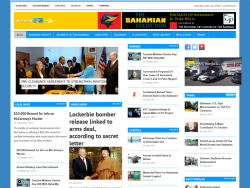The process began at the Summit of the Americas in December 1994, where leaders from 34 nations committed to progressively reduce trade and investment barriers among the member countries. The deadline to establish the agreement is set for 2005. There have been four preparatory meetings since 1994 where nine FTAA Negotiating Groups were established covering market access (including non-agricultural tariffs and non-tariff barriers, rules of origin, customs procedures, standards, and safeguards), agriculture, services, investment, government procurement, intellectual property, subsidies (including antidumping and countervailing duties), competition policy, and dispute settlement. These negotiating groups serve as the basis for the design of the agreement.
The guiding principles of the FTAA negotiations were spelled out at the first summit and are contained in the FTAA Declaration of Principles and Plan of Action. The negotiations are carried out under a structure that is member driven and that seeks to ensure broad geographical participation. A number of agreed principles guide the negotiations, including:
Decisions will be taken by consensus;
Negotiations will be conducted in a transparent manner;
The FTAA will be consistent with the WTO rules and disciplines, and should improve upon these rules and disciplines wherever possible and appropriate;
The FTAA will be a single undertaking (nothing is agreed until all is agreed);
The FTAA can coexist with bilateral and sub-regional agreements and countries may negotiate and accept the obligations of the FTAA individually or as members of a sub-regional integration group; and
Special attention will be given to the needs of the smaller economies.
The main thrust of the FTAA, like any free trade doctrine, is to reduce subsidies and increase investment between countries covered under the agreement. The FTAA plans to accomplish this by reducing tariffs and non-tariff barriers to trade gradually and by implementing investment policies that are least trade restrictive, similar to NAFTA.
The Office of the United States Trade Representative has issued public summaries of the USメs position on each of the nine areas of negotiations. While most of the USメs positions are consistent with what the United States has already agreed to under the WTO or NAFTA, no one outside of the governments negotiating the agreement has seen a copy of any draft or bracketed text surrounding the FTAA. This has led some non-governmental organizations to speculate that the FTAA may go beyond the investor or subsidies provisions of other multilateral trade agreements.
Proponents of the FTAA are quick to point out the benefits of freer trade in the marketplace. Consumers benefit as prices for goods are reduced and delivery systems become more efficient. Not only have the FTAA and other bilateral free trade agreements between FTAA countries benefited consumers, but there is also a trend of growing interdependence among the countries. This interdependence has occurred as economic flows between countries have increased, legal and regulatory schemes have been signed that control not only traditional trade but trade in services and other goods, and diplomatic and political interaction has increased security in the area.
On the other hand, there are many organizations that oppose the FTAA based on the grounds that it will not accomplish what it sets outs to. These groups say the FTAA will encourage companies to move their operations to countries with lower labor costs and more relaxed environmental and labor standards, will allow companies to demand compensation from governments for implementing democratically passed regulatory laws, and will force governments to abandon certain types of economic and community development programs. From their point of view, accepting free trade agreements with provisions such as the proposed FTAA will directly limit the sovereignty of sub-national governments and will encourage a “race to the bottom” where corporate profits are the only measure of economic success and people are valued only as low costs inputs in the production process.



